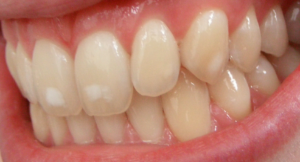Barnet Health Doctors
Contact
Hours
- Monday: 9:00am – 9:00pm
- Tuesday: 9:00am – 6:00pm
- Wednesday: 9:00am – 9:00pm
- Thursday: 9:00am – 9:00pm
- Friday: 9:00am – 5:00pm
Barnet Health Doctors, located in the charming town of Middletown, New York, is a premier dental institution dedicated to providing comprehensive and compassionate dental care to patients of all ages. With a focus on oral health and wellness, the practice is committed to delivering high-quality dental services in a warm and welcoming environment. Led by a team of skilled dental professionals, Barnet Health Doctors offers a wide range of dental treatments to help patients achieve and maintain healthy smiles.
Dental Services
Preventive Dentistry
- Comprehensive Examinations: Thorough dental examinations to assess oral health and detect any signs of dental problems.
- Professional Cleanings: Routine cleanings to remove plaque and tartar buildup, helping to prevent gum disease and cavities.
- Dental Sealants: Protective coatings applied to the chewing surfaces of molars to prevent decay and cavities in children and adults.
Restorative Dentistry
- Fillings: Treatment of cavities with tooth-colored composite fillings for a natural-looking restoration.
- Crowns and Bridges: Custom-made dental crowns and bridges to restore and strengthen damaged or missing teeth.
- Dentures: Complete or partial dentures to replace missing teeth and restore oral function and aesthetics.
Specialized Dental Care
Orthodontics
- Braces: Traditional metal braces and clear aligner therapy to straighten teeth and correct bite issues.
- Retainers: Custom-made retainers to maintain the alignment of teeth following orthodontic treatment.
Endodontics
- Root Canal Therapy: Treatment to save and repair infected or damaged teeth by removing infected pulp and sealing the root canal.
- Apicoectomy: Surgical procedure to remove the tip of the tooth root and seal the root canal to treat persistent infections.
Patient Care
Personalized Treatment Plans
- Individualized Consultations: Thorough discussions and treatment planning sessions to address each patient’s unique dental needs and goals.
- Collaborative Approach: Working closely with patients to develop treatment plans that fit their lifestyle and budget.
Comfort and Convenience
- Relaxing Environment: A welcoming atmosphere designed to help patients feel at ease during their dental visits.
- Pain Management: Utilization of advanced anesthesia techniques to ensure patient comfort during procedures.
Tooth Reshaping
Tooth reshaping, also known as dental contouring or enameloplasty, is a cosmetic dental procedure aimed at improving the appearance of teeth by altering their shape, size, or surface contour. It involves the removal or modification of small amounts of tooth enamel to achieve desired aesthetic results. Tooth reshaping is often used to correct minor imperfections, enhance symmetry, and create a more harmonious smile. Here's an overview of tooth reshaping and its key aspects:
- Indications for Tooth Reshaping:
- Tooth reshaping may be recommended for patients with the following cosmetic concerns:
- Irregular tooth shape or size, such as pointed or jagged edges.
- Minor chips, fractures, or enamel wear.
- Overlapping or uneven teeth.
- Pits, grooves, or rough surfaces on tooth enamel.
- Small imperfections affecting the appearance of the smile.
- Preoperative Evaluation:
- Before tooth reshaping, the dentist will conduct a thorough dental examination to assess the patient's oral health, identify cosmetic concerns, and discuss treatment goals. Dental X-rays or digital scans may be taken to evaluate tooth structure and plan the reshaping process.
- Treatment Planning:
- Based on the patient's needs and preferences, the dentist will develop a customized treatment plan outlining the areas of the teeth to be reshaped and the desired changes in tooth contour. Digital smile design software or mock-up models may be used to visualize the anticipated results and guide the reshaping process.
- Tooth Reshaping Procedure:
- Tooth reshaping is typically performed as an outpatient procedure and does not require anesthesia in most cases, as only minimal enamel removal is involved. The steps of the procedure may include:
- Marking: The dentist marks the areas of the teeth to be reshaped using dental markers or cosmetic pencils, taking into account the desired changes in tooth contour.
- Enamel Removal: Using specialized dental instruments, such as drills, burrs, or abrasive discs, the dentist carefully removes small amounts of enamel from the tooth surfaces to achieve the desired shape and contour. The process is precise and controlled to ensure optimal results while preserving tooth structure and integrity.
- Smoothing and Polishing: After reshaping the teeth, the dentist smooths and refines the tooth surfaces to eliminate rough edges, create a uniform appearance, and enhance the natural luster of the enamel. Polishing may be performed using fine-grit polishing disks or dental polishing pastes to achieve a smooth, glossy finish.
- Postoperative Care and Recovery:
- Following tooth reshaping, patients are typically able to resume normal activities immediately, as the procedure is minimally invasive and involves minimal discomfort. However, some individuals may experience mild tooth sensitivity or discomfort, which usually resolves within a few days.
- Patients are advised to practice good oral hygiene, including regular brushing, flossing, and dental check-ups, to maintain the health and appearance of reshaped teeth. Avoiding habits that can damage tooth enamel, such as teeth grinding or biting hard objects, is also recommended to preserve the results of tooth reshaping.
- Long-Term Results:
- The results of tooth reshaping are generally permanent, as the changes made to the tooth structure are irreversible. With proper care and maintenance, reshaped teeth can provide long-lasting improvements in smile aesthetics and boost self-confidence. However, it's important for patients to communicate with their dentist if they have any concerns or if further refinements are desired.
In summary, tooth reshaping is a conservative and effective cosmetic dental procedure used to enhance the appearance of teeth by modifying their shape, size, or surface texture. By carefully contouring tooth enamel, dentists can address minor imperfections and create a more attractive and harmonious smile for their patients.
Dental Fluorosis
Dental fluorosis is a cosmetic condition that affects the appearance of tooth enamel due to excessive fluoride exposure during the early stages of tooth development. It typically occurs in children under the age of 8, when their permanent teeth are still forming. Dental fluorosis can range from mild discoloration or white spots on the teeth to more severe staining, pitting, or mottling of the enamel.
Here are some key points about dental fluorosis:
- Causes: Dental fluorosis occurs when children ingest too much fluoride during the development of their permanent teeth. Sources of fluoride exposure may include:
- Fluoridated drinking water: In communities with fluoridated water supplies, children may consume excessive amounts of fluoride if they drink fluoridated water or use fluoride-containing oral hygiene products.
- Fluoride supplements: Overuse or misuse of fluoride supplements or fluoride-containing vitamins by caregivers can contribute to excessive fluoride intake.
- Fluoride toothpaste: Swallowing fluoride toothpaste, particularly by young children, can lead to fluoride overexposure.
- Other sources: Ingestion of fluoride from environmental sources such as naturally occurring fluoride in water, fluoride-containing foods or beverages, or fluoride-based dental treatments.
- Symptoms: The appearance of dental fluorosis can vary depending on the severity of the condition. Common symptoms may include:
- White or chalky spots or streaks on the enamel surface (mild fluorosis).
- Staining or discoloration of the enamel, ranging from yellow or brown to dark brown or black (moderate to severe fluorosis).
- Pitting, mottling, or surface irregularities of the enamel, which may affect the tooth's appearance and texture.
- Diagnosis: Diagnosis of dental fluorosis is typically based on clinical examination and observation of the teeth by a dentist or dental professional. Dental fluorosis is often categorized according to its severity using standardized classification systems, such as the Thylstrup and Fejerskov index or the Dean's index.
- Prevention:
- Prevention of dental fluorosis involves maintaining appropriate fluoride exposure levels during the critical period of tooth development.
- Parents and caregivers should supervise children's use of fluoride-containing oral hygiene products and ensure that they use only a pea-sized amount of fluoride toothpaste and spit out excess foam after brushing.
- Caregivers should avoid giving fluoride supplements or fluoride-containing vitamins to children without the recommendation or supervision of a healthcare professional.
- Monitoring fluoride intake from various sources, including drinking water, oral hygiene products, and dietary sources, can help prevent excessive fluoride exposure.
- Treatment:
- Treatment options for dental fluorosis are primarily cosmetic and aim to improve the appearance of the affected teeth. These may include:
- Microabrasion: Removal of surface stains or discoloration using a mild abrasive agent.
- Tooth whitening or bleaching: Application of bleaching agents to lighten the color of the enamel and reduce staining.
- Dental bonding or veneers: Application of tooth-colored composite resin or porcelain veneers to cover or mask the affected areas of the enamel and improve the tooth's appearance.
In summary, dental fluorosis is a cosmetic condition that affects the appearance of tooth enamel due to excessive fluoride exposure during tooth development. Prevention of dental fluorosis involves monitoring fluoride intake and ensuring appropriate fluoride exposure levels during childhood. Treatment options for dental fluorosis are primarily cosmetic and aim to improve the appearance of affected teeth. If you have concerns about dental fluorosis or fluoride exposure, it's important to consult a dentist or dental professional for guidance and appropriate management.




